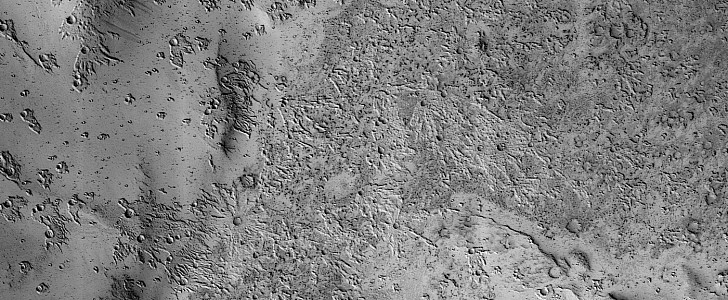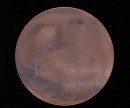There’s a good chance the title above is a bit confusing. Sure, we all know Mars is riddled with craters, and we also know back when they were formed, pretty much all of them gave birth to secondary craters, as the ejecta of the primary impact came down and slammed into the surface. But can a single primary impact generate hundreds of millions of secondary ones?
They can, of course, and nowhere is this more visible than around the Zunil Crater in the Elysium quadrangle. The primary hole in the Martian ground is a little over 10 km (6 miles) across, and that’s big by any standards, but the number of secondary craters that accompany it is both staggering and proof of how violent impacts with rocks from space can be.
Zunil, named so after a town in Guatemala, was formed about a million years ago, so in space terms, it’s relatively young, and still shows most of its original features, including the ray system that makes it the first of its kind to be found on the neighboring planet.
Back in 2017, the HiRISE camera in orbit around the planet captured the image we have here, released by NASA and the University of Arizona earlier in 2022. It was shot from a height of 274 km (170 miles) and shows just a tiny fraction of the large number of secondary impact craters that spread out for miles around Zunil.
NASA is looking at this with interest because the region has “an unusual raised-relief appearance like bas-relief sculpture.” That may have been caused by dust or pyroclastic material, up to 2 meters (6.6 feet) thick, covering the area shortly after the main impact occurred.
So, we’ve had an impact powerful enough to cause a 6-mile-wide crater, bombard the area around it with millions and millions of smaller projectiles, and then cover the whole thing with 6 feet of dust.
Can you imagine what a hellish place the planet we’ll probably call home soon once was?
Zunil, named so after a town in Guatemala, was formed about a million years ago, so in space terms, it’s relatively young, and still shows most of its original features, including the ray system that makes it the first of its kind to be found on the neighboring planet.
Back in 2017, the HiRISE camera in orbit around the planet captured the image we have here, released by NASA and the University of Arizona earlier in 2022. It was shot from a height of 274 km (170 miles) and shows just a tiny fraction of the large number of secondary impact craters that spread out for miles around Zunil.
NASA is looking at this with interest because the region has “an unusual raised-relief appearance like bas-relief sculpture.” That may have been caused by dust or pyroclastic material, up to 2 meters (6.6 feet) thick, covering the area shortly after the main impact occurred.
So, we’ve had an impact powerful enough to cause a 6-mile-wide crater, bombard the area around it with millions and millions of smaller projectiles, and then cover the whole thing with 6 feet of dust.
Can you imagine what a hellish place the planet we’ll probably call home soon once was?






